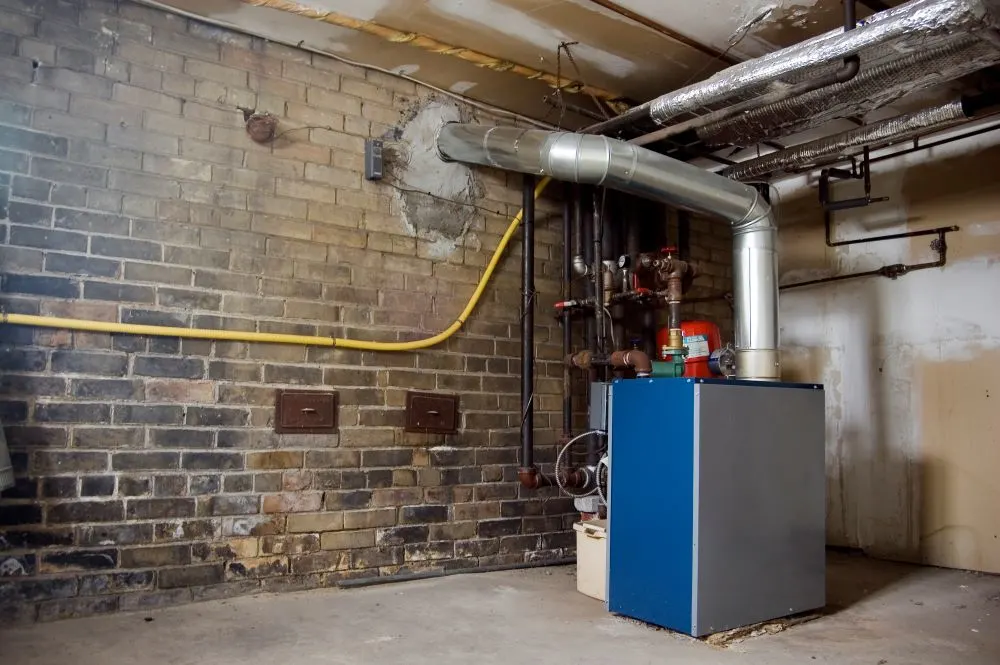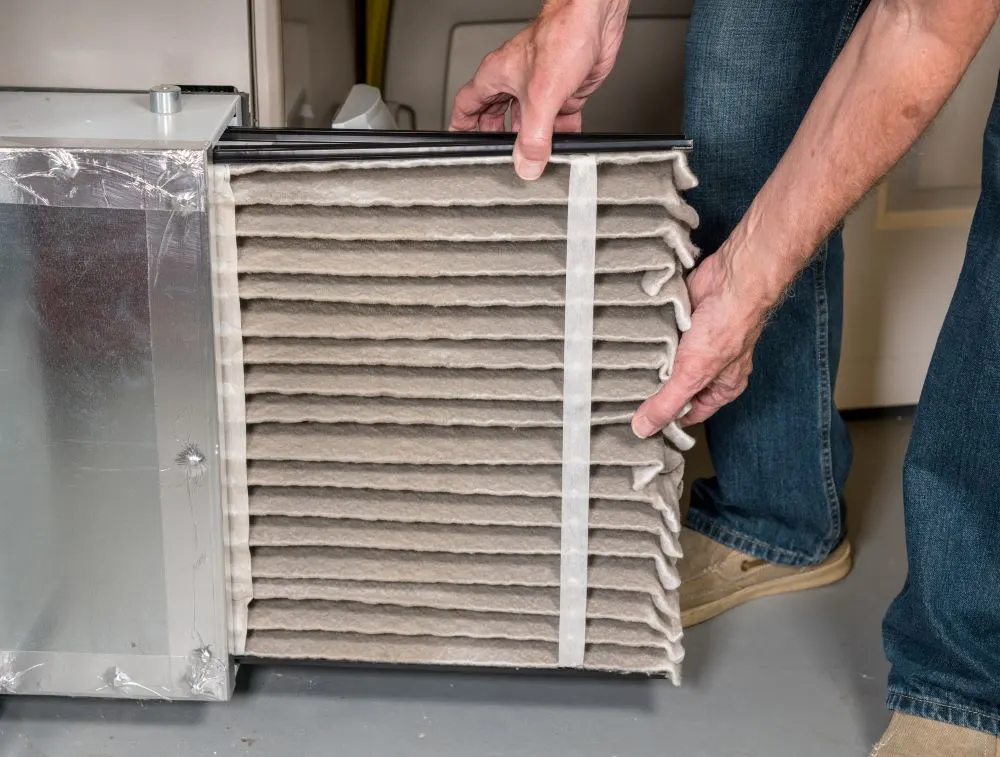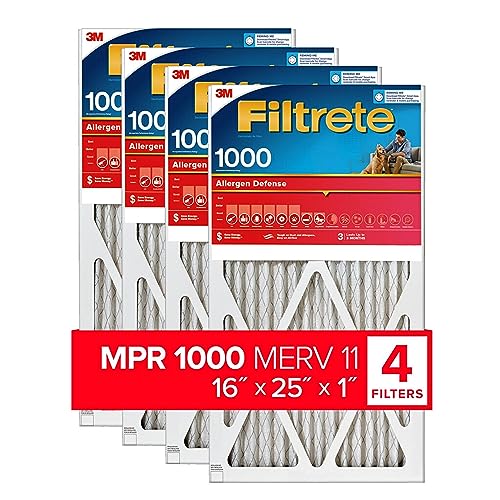One would think the issue would be how to warm your basement in winter. However, it is possible for too much heat to build up in your basement, even in winter, and it is important to address the matter.
It’s highly unlikely that your new neighbor is magma, so you will probably find the source and solution to your problem in the basement itself. Too hot or too cold? Let’s check the HVAC! There are several appliances and components of your HVAC system located in the basement that can be causing trouble.

Excessive basement heat is likely originating from the furnace directly or through the HVAC system. Check for and seal leaking ducts, clean the furnace filter, ensure all vents and registers are open, adjust dampers, install more return vents, and/or insulate ductwork.
Make Sure Furnace Is Not Leaking
How Leaking Furnace Adds to Basement Heat
Your furnace may be leaking air due to poor connection or sealing on the main trunk or on the supply ductwork. This allows heated air to escape into your basement, where the insulating ground around the basement shell helps to trap it.

The furnace trunk is the main duct for the furnace and travels throughout the house. If air is leaking from the trunk into the basement, you will probably notice that the rest of the house is colder as it supplies the auxiliary ducting that filters hot air into the whole house.
Your basement is going to get a little too toasty, even for snowy winter weather!
Fixing a Leaking Furnace
If there is a sealing problem on the furnace connections, the solution is simple: you just need to seal the ducts. There are three methods you can look at to accomplish this.
If air is leaking from the furnace trunk, you can use caulk for sealing up smaller holes and a foam sealant (Great Stuff Foam Sealant (amazon link)) for larger ones. An extra layer of aluminum foil duct tape, like TapePlus Professional Grade Aluminum Foil Tape (amazon link), is required to reinforce the sealing of any type of gap.
You need to be aware of the high heat levels associated with that duct line and use appropriate materials, such as Rutland High Heat Silicone Seal (amazon link).
How This Cools Basement and Saves Energy
By sealing gaps and cracks in the ducting for the furnace, you are restoring the integrity of your HVAC system.
Without the steady stream of hot air being funneled directly into your basement, it can cool to the correct, HVAC-controlled temperature.
You will save energy because the furnace won’t need to work overtime to try and heat the house while most of it is just pouring into the basement.
Check Furnace Filter Is Clean
How Dirty Filters Add to Basement Heat
Furnace filters catch insects, dirt, pollen, etc., that are brought in with the in-flowing air. They can even gather lint from dryer exhausts that are located too near the furnace intake (a very dangerous situation). These impurities are filtered out before the air is heated, then passed through the house.
A clogged furnace filter makes your system work hard to compensate for less airflow and can lead to the furnace overheating.

This excessive heat that your furnace is now throwing off is going to be dumped directly into your basement air.
Filters need regular replacing, not just for better air quality, but also because dirty filters negatively impact your HVAC system.
Cleaning/Replacing Furnace Filters
The filter is commonly located in the blower compartment, near the return air connection. Remove the old filter and follow the manufacturer’s instructions for installing the air filter. Make sure the arrows on the filter align with the direction of airflow and check that the filter is securely placed.
You should check your furnace filter monthly and replace it every few months as needed. Regularly cleaning the furnace filter will help your system last longer and means that your furnace can pull air in properly.
A good quality filter will optimize your HVAC system’s function, which can be determined using the Minimum Efficiency Reporting Value (MERV).
Look for a minimum MERV rating of 7.
Ratings 1-6 will only keep out the largest impurities. Ratings of 13 and onwards are considered high-efficiency filters, and I recommend consulting an HVAC specialist to get a good match for your system.
- #1 Recommended Brand* (*Filtrete Brand is the most recommended brand of HVAC Air Filters based on the US Filtrete Brand Health Tracker, Ipsos, June 2022)
- The higher the MPR, the more microparticles--such as pollen, pet dander, smoke, bacteria and viruses--your filter will capture from the air passing through it
- FOR OPTIMAL PERFORMANCE of your heating & cooling system or HVAC system, change your home air filter at least every 90 days for 1 in. filters
- A dirty filter will slow down air flow and make the system work harder to keep you warm or cool--wasting energy; Sign-up for a filter change reminder program that works for you!
Last update on 2024-03-28 / Affiliate links / Images from Amazon Product Advertising API
How This Cools Basement and Saves Energy
By keeping the filter clean, you are preventing your furnace from overheating. This helps cool your basement as the furnace is not producing extra heat while it works hard to pull air into the system.
Not only does this reduce the heat transferring into your basement without the regulation of the heating system, but this also saves on energy since the furnace can function at its standard energy usage with optimal functioning.
Make Sure All Registers and Vents Are Open
Closed Vents Cause Heat Build-Up in Furnace
In an attempt to control how much or how quickly hot air reaches certain rooms, homeowners often shut off some of their HVAC vents. While this may seem like a logical course of action, it is really detrimental to the health of your HVAC system.
Heat will be redirected, but not at all in the ways that you desire. Warmed air will be lost to unconditioned spaces through leaks in the ducts (made worse by the increased pressure created by closing off vents). If these ducts are in your basement, then you have uncontrolled dumping of heat into this room.
Additionally, the furnace has to work harder and run for longer periods of time in order to overcome the increased resistance or static pressure, so it is generating more heat. This is compounded by a lack of return air if return vents are sealed.
How This Cools Basement and Saves Energy
The furnace will function properly without the additional strain, so it produces less by-product heat. Additionally, the warm air is reaching the rooms as it should, so the furnaces’ heat exchanger doesn’t have to work so hard to produce more and more hot air to compensate for this.
Adjust In-System Dampers
How Dampers Can Divert Heat into Basement
Dampers can be adjusted on vents to help control airflow and increase the amount of hot air supplied to the rest of the house while decreasing the amount for the basement.
If your dampers are fully open in the basement and partially open on the upper floors, then the hot air is not going to be leaving your basement effectively.
Adjusting the Dampers
If your dampers are adjustable, they will have levers or dials. Dampers should follow the right-for-tight and left-for-loose rule. But you will be able to see the blades or flaps of the damper widening and enlarging the gaps between them when they are open. If they are closed over, the edges should be lying close to each other.
You need to close the dampers over in the basement, but not completely. By opening the dampers on your upper floors, heated air will be forced upward.
How This Cools Basement and Saves Energy
This cools the basement but allows the hot basement to naturally rise through the vents to other, higher areas of the house. This removes some of that hot air that is making your basement uncomfortable.
Energy-saving comes from relying less on heating upstairs and the need to run the A/C for the basement. You are using the air that is already in the house to help balance the internal temperature.
Install Return Vents in Basement
Few Return Vents Limit Cold Air Entering Basement
Return vents extract air from a specific area and can be set up to deposit the air directly into the HVAC system for distribution.
Having return vents in a basement can be helpful in removing extra heat from the area in winter and pulling cool air in during the summer. This air can then be utilized in other parts of the house to help heat or cool it while decreasing the demands on your heating or cooling system.
Installing More Return Vents
The return vent should go near the furnace if your basement is segmented. Otherwise, the best place to put return vents to deal with heat would be near the basement ceiling.
Hot air rises and so will sit near the ceiling. Placing your vents here will position them with the best access to the hot air.
If you installed more vents near the floor, your system would be pulling any cool air that has sunk to the floor out of the basement before it can get to the hot air.
How This Cools Basement and Saves Energy
The return vents can be used to take heat away from the basement and use it elsewhere in the house. Basements are a characteristically cooler area of a home. If you remove the extra heat, you allow your basement to cool down as cool air naturally sinks.
By making use of the heat already available to you from your furnace, you will cut your utility costs and energy usage.
Insulate the Ductwork
Uninsulated Ductwork Transfers Heat to Surroundings
The very process by which insulation keeps cold air out of your ducting is how it also keeps warm air in.
Insulation functions to prevent the transfer of heat and thereby conserve energy. By covering the ducting for your heating system, you are isolating that hot air in the ducts so that it can only be expelled as intended in the HVAC system.
Best Insulation Options
The best insulation option depends on what you need from your insulation, but there is a minimum standard for unfinished basement insulation as set out in the building code.
Insulation with foil offers not only good thermal benefits at an affordable price, but also has decent soundproofing abilities that help keep your HVAC system noise levels down.
Fiberglass or polyester insulation options are very effective at preventing heat exchange and are known for their longevity, however, you won’t get as good noise reduction.
Cellulose insulation works for thermal retention and sound levels, but you have to be careful to install it in a way that allows room for airflow.
How This Cools Basement and Saves Energy
By keeping your warm air in the ducts, you provide the HVAC system with the heat it needs to distribute with the minimum amount of heat lost.
When the heat is being transferred into your basement, you are going to have difficulties controlling the temperature of the room.
If your HVAC system doesn’t have to keep heating more air to compensate for the heat lost to the basement, it will not have to work more than necessary and will use far less energy.
You might still have to employ active methods of cooling the basement (like a mini-split), but by taking the above steps, you will significantly reduce the work these unit would have to do to cool the basement.
Sources
https://www.servicechampions.net/blog/where-is-my-furnace/
https://www.servicechampions.net/blog/air-filter-isnt-working/
https://insulationinstitute.org/wp-content/uploads/2015/11/AH121.pdf
https://www.grandrapidsductcleaning.co/blog/types-of-duct-insulation
https://www.energy.gov/energysaver/minimizing-energy-losses-ducts






